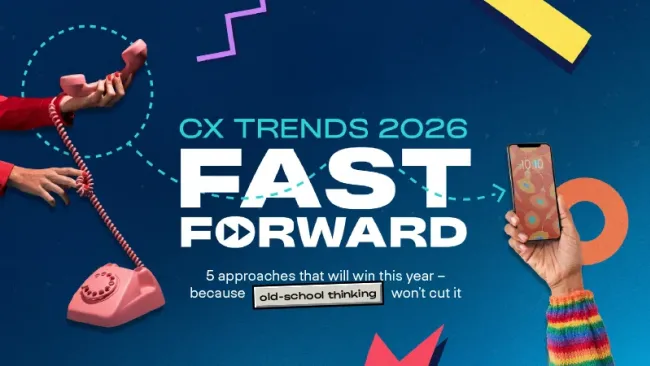For decades we have been told that knowledge is power. This still holds true, with the caveat that it must be the “correct” or “right” knowledge. At a time when there’s an abundance of fake news in our society and outdated and/or conflicting information in our systems, true power is awarded to those who can quickly, easily, and efficiently find the right knowledge.
This is especially true in the business and customer experience (CX) world. Knowledge management can make or break a customer interaction. Any care associate who has struggled to locate the right information knows this is true. Yet knowledge management is only growing more complex as the number of touch points in our omnichannel world increase. Companies have intranets, online storage repositories, CRMs, training documents, web portals, online communities and other “places” that house information – often providing conflicting and contradicting information. The companies that prioritize optimized knowledge management deliver superior customer experiences and edge out competitors.
Knowledge = Excellent CX
Knowledge management consists of classifying the knowledge that an organization creates and disseminating it to the people who need it, when they need it. It’s not a secret that knowledge management is beneficial to businesses. Indeed, 43 percent of executives said that improving knowledge management would boost productivity by 30 percent or more, with 14 percent saying an improvement of 50 percent or more was possible, according to a joint study by the Technology Services Industry Association and Coveo.
A knowledge management system is only as valuable as it is accessible and the content that exists within it. Case in point: personalized customer experiences are a critical differentiator for many businesses. A luxury vacation club that caters to high-end travelers recognized this fact, but when it experienced rapid growth, it became clear that its homegrown system for tracking members’ needs was unsustainable.
Personal vacation advisors collected valuable data about member preferences and travel history, but it was increasingly difficult to track, update, and utilize the data via the company’s cobbled-together system of emails, spreadsheets, and paper forms. We were brought in to implement a new customer relationship management solution that would allow the entire company to grow the sort of personalized relationships that individual advisors were trying hard to maintain manually.
We collaborated with the client to design a customized solution that enables the club’s staff to create a detailed profile for each member that was accessible to personal vacation advisors as well as destination concierges on their PCs, tablets, and other mobile devices via a cloud solution. This allowed the staff to take a more active role in personalizing the experience of each member in a manner that’s scalable. A customer experience optimizer stores all member information, and a rules-based engine suggests relevant destinations for members that an advisor can use as a targeted travel recommendation.
Designing an automated cross-channel solution that was user-friendly and could be updated in real time was key. Any time that new information was discovered by an advisor or concierge (special needs, medical concerns, milestone dates), it could be added to the profile. We also delivered an online Notification Center that alerts employees in real time about member activities, and about opportunities to proactively improve the customer experience.
The club doubled its membership through the acquisition of a competitor, and the system helped the club maintain a 96 percent member retention rate, and a Net Promoter Score™ of nearly 70 throughout the entire merger. The system is now being used by the club to identify new destinations to add to its portfolio, with investments now targeted for success through a better understanding of what its members desire.
Artificially Intelligent (AI) Knowledge Management
It’s impossible to manually track the mountain of documents, email, media, and other content that organizations produce—much less search through it. This is why machine learning, cognitive computing, and edge computing, which make artificial intelligence possible, are becoming more prevalent in knowledge management solutions in the form of AI-enabled search and analytics.
AI enables people to make use of enormous amounts of data. PwC estimates artificial intelligence will contribute up to $15.7 trillion to economies by 2030. Together, cognitive search, natural language processing, machine learning, and artificial intelligence will unleash organizational data. Here are just a few ways that AI’s ability to rapidly parse through and analyze data could enhance knowledge management:
- Identify patterns and insights in the ways customers engage with your brand across different channels
- Mine customer moments to uncover user intent
- Transform what appear to be insignificant moments into valuable customer recommendations
- Provide insights that allow employees to personalize customer touch points in real time
Continuous Machine Learning
Companies that successfully manage their data and make informed decisions based on business intelligence have a significant advantage. At the same time, AI-powered knowledge management solutions can only do so much. Businesses also need employees with the skills and knowledge to leverage AI as well as train it through efficiently utilizing machine learning.
The value of knowledge management is heavily dependent on the quality of the machine learning technology as well as having the infrastructure in place for employees to provide personalized insights that adds context to the metadata, content, inferences and other data elements. Machine learning-infused knowledge management solutions empower employees with curated content that is continuously refined but it’s up to the organization to help employees utilize those insights. And that means ensuring that end users and other stakeholders are in the center of strategy, design, and operations.
How does your customer experience strategy stack up? Take our quiz to find out.
















